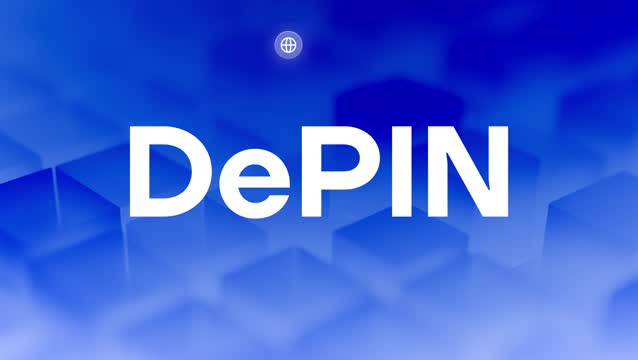The Potential of DePIN in Transforming Internet Infrastructure. In the fast-changing digital world, the internet has turned into the core of worldwide communication, business, and creativity. Yet, the existing centralized system brings its own set of problems, such as security gaps, privacy issues, and the challenge of handling large amounts of data. This is where DePIN, or Decentralized Physical Infrastructure Networks, steps in. It’s a revolutionary method that aims to change our perspective on how the internet’s physical infrastructure is structured. In this article, we’ll delve into the idea of DePIN, its potential to revolutionize internet infrastructure, and the trends that might influence its development.
Definition and Explanation of DePIN
DePIN, or Decentralized Physical Infrastructure Networks, is a forward-thinking framework created to decentralize the physical aspects of the internet. It operates differently from the traditional centralized models, where data travels through a few dominant entities. Instead, DePIN uses a decentralized network of nodes to manage and distribute data. This approach improves security, minimizes the risk of a single point of failure, and makes access to network resources more equitable.
Key Components and Technologies Involved
DePIN incorporates several advanced technologies to meet its goals:
Blockchain: Offers a secure and transparent record-keeping system for transactions and data sharing.
Distributed Ledger Technology (DLT): Ensures data is mirrored across various nodes, enhancing its reliability and security.
Decentralized Storage: Employs technologies like IPFS (InterPlanetary File System) to spread data across a network of nodes.
Smart Contracts: Automate agreements and transactions within the network, reducing the necessity for middlemen.
Edge Computing: Places computation and data storage closer to the point of use, enhancing response times and conserving bandwidth.
Put your money into SRP Coin now and lock in a secure, decentralized tomorrow with DePIN. Welcome progress and reap the benefits!
The Distinctive Features of DePIN Compared to Conventional Internet Architecture
Conventional internet architecture is built on a foundation of centralized data hubs and providers. This setup can result in congestion, increased susceptibility to cyber threats, and elevated expenses. In contrast, DePIN breaks down the architecture by spreading out the data and computing capabilities over a broad network of nodes. This approach not only boosts security and confidentiality but also enhances adaptability and lessens dependence on central authorities.
The Significance of DePIN in the Architecture of the Internet
The Concept of Decentralization and Its Effect on Architecture
At the core of DePIN’s ability to revolutionize internet architecture lies the concept of decentralization. By spreading data and computing capabilities over a wide array of nodes, DePIN mitigates the dangers linked to centralization. This includes diminishing the effects of cyber-attacks, avoiding data monopolies, and encouraging more innovation by making access to network resources more equitable.
Improved Security and Confidentiality with DePIN
In the era of digital existence, security and confidentiality are paramount. DePIN tackles these challenges by employing blockchain and cryptographic methods to safeguard data and transactions. Data is encrypted and distributed throughout the network, making it considerably more difficult for unauthorized individuals to breach the system. Moreover, users enjoy more control over their data, thereby enhancing privacy and confidence.
Scalability and Resilience Enhancements with DePIN
Scaling up traditional internet infrastructure is a major hurdle, as it often struggles to manage large data volumes and user demands. DePIN’s distributed model enables it to scale more effectively, by adding extra nodes to the network to meet growing needs. This distributed strategy also boosts resilience, allowing the network to keep functioning even if some nodes fail.
Advantages of DePIN in Transforming Internet Infrastructure
Enhanced Data Privacy and Security
A key advantage of DePIN is its ability to improve data privacy and security. By using cryptographic methods and decentralized storage, DePIN ensures that data is protected and only accessible to authorized individuals. This reduces the risk of data breaches and unauthorized access, offering users increased security.
Cost Savings and Less Dependence on Centralized Entities
The Potential of DePIN in Transforming Internet, can significantly cut down on the costs associated with maintaining and operating centralized data centers. By spreading resources across a decentralized network, organizations can achieve higher efficiency and savings. Moreover, this approach lessens dependence on centralized entities, creating a more competitive and dynamic market.
Better Performance and Lower Latency
Edge computing, a crucial part of DePIN, brings computing power closer to the users, reducing latency and enhancing performance. This is especially important for applications that require real-time data processing, such as gaming, streaming, and IoT.
Increased Accessibility and Inclusivity
DePIN has the potential to make internet infrastructure more accessible, benefiting underserved and remote areas. By using a decentralized network, communities that were previously without reliable internet access can now engage in the digital economy, promoting greater inclusivity and economic growth.
Real-World Use Cases of DePIN
DePIN in Cloud Storage and Computing
Decentralized cloud storage and computing solutions, powered by DePIN, offer improved security, privacy, and performance compared to traditional centralized services. These solutions distribute data and computing resources across a network of nodes, ensuring greater reliability and efficiency.
DePIN in IoT (Internet of Things) Networks
IoT networks can greatly benefit from DePIN, as it provides a scalable and secure framework for managing the extensive data produced by connected devices. By utilizing edge computing and decentralized storage, DePIN can enhance the performance and reliability of IoT networks.
Successful Implementations of DePIN
Several projects and organizations have successfully implemented DePIN solutions, demonstrating the potential of this technology:
Filecoin: A decentralized storage network that uses blockchain technology for secure and efficient data storage.
Helium: A decentralized wireless network that uses blockchain and IoT for low-cost, widespread connectivity.
Sia: A decentralized cloud storage platform that offers secure and cost-effective data storage solutions.
Barriers and Constraints
Technical Difficulties in Deploying DePIN Solutions
Deploying solutions based on DePIN can be technically demanding, necessitating a deep understanding of blockchain, encryption, and distributed technologies. Moreover, ensuring that different DePIN networks can work together can be intricate.
Legal and Regulatory Issues
DePIN operates within a relatively new and dynamic regulatory environment. Making sure to adhere to current laws and regulations, especially concerning data protection and security, can be complicated. Additionally, dealing with the legal complexities involved in running a decentralized network can be a significant challenge.
Issues with Growth and Network Efficiency
While DePIN provides substantial advantages in terms of growth, managing and sustaining a decentralized network can be complex. Achieving uniform performance across a network of nodes that is spread out requires meticulous planning and a strong infrastructure.
Emerging Trends and Advancements in DePIN Technology
The domain of DePIN is in a state of rapid evolution, with continuous advancements in blockchain, encryption, and decentralized storage technologies. Future progress could further improve the security, scalability, and efficiency of DePIN networks.
The Importance of AI and Machine Learning in DePIN
Artificial intelligence (AI) and machine learning (ML) could significantly boost DePIN networks. By utilizing AI and ML, DePIN can enhance network efficiency, security, and data management solutions.
Future Expectations for Internet Infrastructure with DePIN
The Potential of DePIN in Transforming Internet Infrastructure it is expected to play a more prominent role in the future of internet infrastructure. Expectations for the future include a broader adoption of DePIN solutions, increased decentralization of internet resources, and improved security and privacy for users.
Conclusion
In conclusion, The Potential of DePIN in Transforming Internet Infrastructure. offers improved security, privacy, scalability, and cost-effectiveness. Looking ahead, DePIN has the potential to revolutionize the digital landscape, providing a more secure, inclusive, and robust internet infrastructure. As organizations and individuals continue to investigate and implement DePIN solutions, the outlook for the future of internet infrastructure appears more promising than ever.

 China
China Russia
Russia India
India









